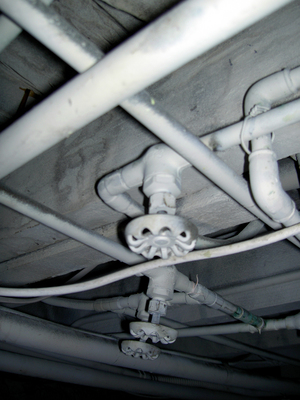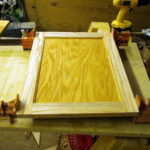If you have ever thought about finishing your basement and turning it into usable space but were turned off from doing so because the room is too cold or too expensive to heat you may want to consider insulating the walls.
What follows is generalized information on how to insulate your home’s basement walls using rigid panel insulation board.
Materials List
In order to begin to insulate your home’s basement walls you will need to gather together the following materials;
• Waterproofing compound
• Brush to apply waterproofing compound
• Rigid insulation boards
• Adhesive
• Hammer
• Masonry nails
• 1x2s for the grid
• Batting or Blanket insulation with vapor barrier built in
• Utility knife
• Fine grade hacksaw blade
• Staple gun and staples
• Drywall
• Drywall tape
• Fine grade sand paper
• Sanding block
• Drywall nails
• Dust mask
• Joint knives
• Ruler
Prepping the Walls
Before attempting to insulate the basement walls you will want to look for and eliminate any moisture issues. Moisture damages insulation by creating an opportunity for mold and reducing its energy efficiency.
Most moisture problems that occur on basement walls can be corrected with the application of a waterproofing substance to the wall itself. If you find that you must waterproof your walls be sure to allow the waterproofing compound to completely dry before continuing with the insulation installation.
Creating the Grid
Once the walls are dry you can proceed by taking out a hammer, masonry nails and your 1x2s. The 1x2s should be spaced apart just far enough so that the rigid insulation board can rest up comfortably against them. The grid is what is going to hold your rigid insulation panels to the wall so your measurements and spacing will need to be precise.
Once the grid has been assembled and affixed to the wall it is time to turn your attention to the window sills.
Take pieces of either insulation blanket or batting and use your utility knife to cut out pieces that will fit in the spaces over the top of the window sill.
It is imperative to note that when doing so the insulation must be positioned with the vapor barrier facing outward.
After the batting is in place take a staple gun or duct tape and attach it securely to the surrounding wood.
Once the window sill area has been insulated with the batting it is time to adhere the rigid insulation panels to the furring strips.
Start the procedure on one side of the room and work your way around to the other side measuring, cutting, and affixing the rigid insulation board as you go.
Note: you will use the adhesive recommended by the rigid insulation panel manufacturer to attach the panels to the grid work.
Because of the high combustibility of the rigid insulation panels you will need to cover them with a minimum of ½ inch of drywall.
Measure and cut out your drywall. Then nail the drywall to the grid being sure to countersink your nails. Afterward apply drywall tape and joint compound to the drywall seams and nail holes.
Once the joint compound is dry, don your dust mask and use the fine grain sanding paper to smooth out the rough spots. When the drywall is smooth and dust free you can proceed to add whatever finishing touches you so desire (i.e. paint, wallpaper, and paneling).
Additional Information
In some instances you may want to use insulation batting or insulation blankets to insulate your basement walls instead of the rigid panels.
It is alright to do so but instead of creating a grid with 1x2s you will need to build stud walls, which can be more costly and time consuming.
In addition, depending on the amount of batting you will need to reach the desired R-value for your area it may also greatly reduce the usable square footage of the basement. The option is yours to consider.
Those home owners who have questions and want more specific information on insulating basement walls should contact a licensed specialist for assistance.




